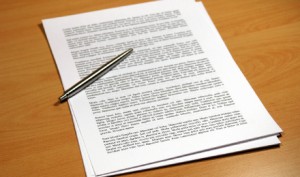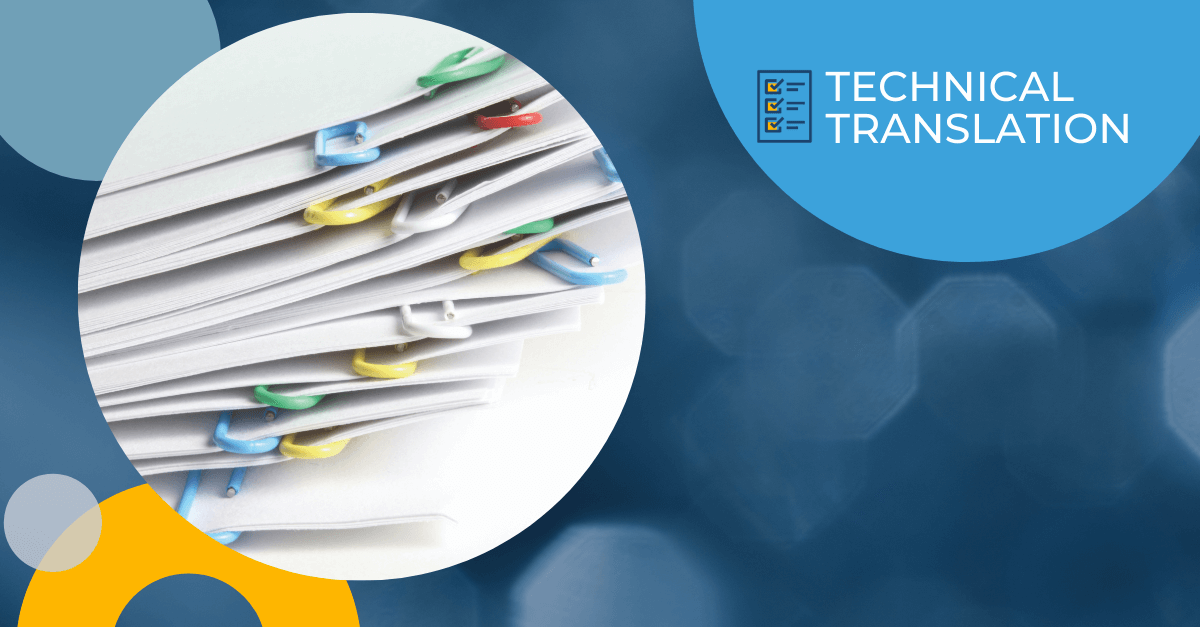Tag: quality translations
11 Tips for Getting a Quality Translation

It’s quite difficult to have faith in the quality of a document translation when you don’t speak the target language. Translation is interpreting the language and meaning of a source text into a target text. The blind progress of this procedure can be arduous and frustrating, especially when you feel the quality is somewhat out of your control.
Luckily, with the help of this checklist of useful tips, you can regain some control and help ensure a positive outcome, as much as possibility allows. Professional translation is a business that is often subjective when determining the definition of “quality.” As with any art, which translating is considered to be in the artistic school of writing, there is no universal definition of quality. View the art of translating as a process rather than an end goal, because a solid plan is the most valuable aspect of a business endeavor.
1. Choose a Service Wisely
Never rely on an automated translation service such as Google Translate – always bring in a human to decode. A human can register the emotion of a document, such as tone, audience and naturalness, which far surpasses impeccable grammar. Despite what you may see in advertisements, a large accredited company is not always better than a small private one with reinforced credentials.
Certified translators who specialize in certain areas of expertise – ones associated with your needs – will individualize their client’s project and provide specialized attention and added diligence.
Choose a translation service that provides the assistance of native speakers of your target language and has knowledge of your document’s subject matter or industry. Some translation services employ amateur translators, and if you don’t do your homework, trusting them may cost you money, time or your job. Here are the qualities to look for in a potential translator:
- Availability. You should be able to communicate with your translator as needed; some companies even provide 24-hour support.
- Cultural understanding. Does the translator understand the culture of your audience, taking into consideration lifestyle, socioeconomic status, customs, style of speech and education? Do they understand the cultural differences between the reader and writer?
- Experience. Can the translator pick up on difficult or different parts of speech and vocabulary? Can they preserve syntax and tone?
- Understanding of source and target language(s). Merely knowing the language isn’t enough to obtain quality. Grasping its structure is just as, if not even more, imperative.
- Easy to work with. Strive for a hassle-free experience by checking past reviews of a company or professional. Anyone you conduct business with should be willing to provide you with previous work samples or testaments from other clients.
- Size of agency. A larger agency may be better suited for a large project with multiple languages, but a smaller one is more intimate and personable.
- Ethical and legal obligations of service agency. What is their objective as a company? What matters to them that will benefit or hurt you? Navigate through the website to look for a mission statement or stated company values. If you can’t find the information you seek, simply ask.
- Past reviews. Don’t simply believe what you read on the biased Internet, but do thorough research and ask people who have previously hired the company.
- Network connections. Do they outsource? Who in their company fills multiple roles?
- Rates vs. amenities offered. A great service will cost you a little more, but is it worth it? Get a quote and compare with other providers. Weigh the rates against the amenities offered to ensure a good fit for your needs.

2. Start Hiring Early
As soon as you decide to translate a piece of writing, don’t make the make-or-break mistake of wasting time. Find a professional right away. A quality translation requires constant feedback and communication between you and your translator for a productive, constant upkeep of maintenance to ensue throughout the journey.
Have an editor comb through and proofread your document prior to hiring a professional translation service. On average, the amount of words a certified translator can decipher is between 2000 and 3000 per day.
Together, agree on what specifications the translation should have before the procedure begins. Having the service industry be a part of the preparation period is highly constructive. Also, you may be surprised what features of your projects command more time. PDF files and European languages, for instance, take more time to interpret.
3. Form a Team and Make the Translator a Member
As amendments to your document are added and the project evolves, your translator must develop his or her work as well. Make changes with your translator and form a partnership; this will help him or her concurrently understand the context of the content better.
Include editors, attorneys and proofreaders on your team as well. If everyone can work together, the outcome will be significantly better. When people have a difference in opinion, everyone can collaborate to figure out why. The strength of the translation supply chain depends on what links it together. The first step to doing this is to mandate all members sign a confidentiality agreement.

4. Designate a Contact Person and/or Project Manager
It will be easier to have your translator contact one person from your office, mitigating the possibility of communication error. Choose someone who is knowledgeable about languages and the document at hand. This will eliminate the possibility of confusion on either end of the process.
The assigned contact person could have the following responsibilities:
- Be in charge of providing the translator with the context of the document.
- Promptly and clearly answer any questions the translator might have.
- Be accessible for help.
- Also be the designated contact person for other members of the team.
- Ask any questions for the business; be an ambassador.
- Delegate team meetings when possible.
- Define the target audience, where the text will be read, and any other key principles such as the purpose of the project.
- Serve as or be in constant contact with the program manager.
- Aid with the association of text to graphics.
- Reach out to references if needed.
- Keep on point with the goal of translation, any project milestones and the due date.
- Safeguard proper formatting.
- Work to produce a quality translation from the start.
- Spell out the team’s mutual duties.
- Keep organized and stay alert.
5. Define Your Target Audience
Outwardly defining the target audience is crucial for both the translator and your business. Doing so will ensure a solid foundation for the project. If the translator is of a different ethnicity, his or her cultural awareness of the readers may differ from a native’s understanding, which is why native speakers are always best to hire.
Describe the target audience to your translator in a way that’s clear, so he or she can understand and provide a better interpretation for readers. The tone required for a group of doctors will be different from an appropriate tone for a group of students. Make sure the translator knows this. Also, a mishap in interpreting medical terminology may be a fatal one. All technical elements of a text must be translated by someone who is knowledgeable in that field.
6. Be Concise
If a sentence can be deciphered in multiple ways, the translator is obliged to follow his or her best instinct and make an educated guess. Constantly asking for clarity is time consuming – and often pricy. A vague sentence is never effective, regardless of the language. If language is a barrier when it comes to a word or phrase, paint a picture for your translator using drawings, vivid imagery, photos or acting. Eliminate the fluff and get to the point. Experienced translators know when to effectively metaphrase and paraphrase.
7. Allow Yourself Adequate Time
Unless you have an extremely time-sensitive scenario, extend your project’s deadline further than anticipated. Allow time for correcting error. A rush translation costs a great deal of money and will likely contain errors. Many people today opt for the quicker way because it seems more beneficial, but the backlash can be significant.
Use a systematic approach when translating a document: plan, prepare, produce and edit. The more time you allot for the translation to be completed, the higher quality it will be. Having the translator keep an error log throughout the process will let you see the source of errors, where your translator may need outside aid and where your document may need editing.
Also, decide upfront what sections of your text actually require translation, because highlighting important parts of the document may be all that is necessary. Accessibility matters more than authenticity.
8. Perfect Your Original Document
A disordered document means a disordered translation will follow. You cannot expect a translation to improve upon the content of the arcane parts of your writing. An error in the source text results in an error in the target text. The term “translation” stems from the Latin word translatio meaning “to carry over.”
Double-check the following items when preparing your manuscript for conversion:
- Punctuation and grammar. For clarity, punctuation helps immensely.
- Spelling. The wrong homophone can cause confusion, so be sure word choice and spelling is correct and appropriate.
- Consistency. Double check the document for cohesion and consistency before the translation.
- Word choice. Try to avoid words with multiple meanings; this can negatively affect the translation.
- Clarity. Any confusion or awkward phrasing can greatly alter the translation or message.
- Intended tone. The voice of the original writer will be altered when recreated, so try to depict it as well as you can through strong language.
- Proper nouns and names. Spell and format all names correctly.
- Correct citations. You will need to refer to sources of information later, especially quotes, to ensure outside research isn’t distorted in copy.
- Proper format. Many services charge extra for formatting, but if willing, this is a task you can do on your own.

9. Pay Attention to Creative Language
Slogans, idioms, sarcasm, clichés and other techniques in conversation and sales campaigns are much harder to convert, therefore they will require more time, effort and consideration if used. You should always verify these areas of your document with more than one translator because personal interpretations may vary.
Eliminate unneeded instances of creative language in the source document if not absolutely essential. Creativity may have to be sacrificed to preserve the overall message.
10. Use A CAT (Computer Aided Translation)
CAT machines aid translators with computer memory of previously translated words or phrases. The coveted tool helps greatly with protecting proper nouns and reused expressions. The type of suitable instrument you will need depends solely on the characteristics of your document. Certain spreadsheets and PDFs require certain coding, and demand more auto-formatting features.
CATs also often provide glossaries and style guides. This technology saves a great deal of time, and because time is money, you save that too when minimizing human translating by up to 50%. A CAT should never be used in place of a human translator – it is simply an aid.
11. Use Back Translation
Consider having passages translated back into the source language for editing. This will give you a general idea of how the translation process went. This practice is less grueling than an original translation, but remember, the back translation won’t perfectly match the source document.
Some parts were likely omitted or added in order to preserve clarity and naturalness. Still, you can see where parts of the text greatly differ, and from there disinter if the fault is in the document or translation.
Don’t rely on a language dictionary alone for any verification. But if you use one, use a monolingual one. Have an intended receptor read the text and voice his or her opinion on the translation. Here are a few factors that back translating won’t catch:
- Proper nouns and names
- Names of businesses
- Measurements
- Currency
- Geographical locations
- Dates
- Masculine or feminine parts of speech
- Levels of education
- Historical references
- Explicit material
While you may feel somewhat in the dark on this venture, you have a certain and important role in the process. Obtaining a quality translation is essential for your business’s document to serve its intended purpose. A quality translation is a rare treasure – and one that’s in high demand.
Not only can a poor translation confuse your audience, it could also possibly offend them. Misinterpretation may result in a loss of customers, allies, business relationships and your role in the company. The task of translating is highly complex, so don’t undermine it. Even the best specialists make mistakes because they are human.
Remember to remain patient and appreciate the complexity of the task. In summary, a quality translation cannot be reproduced without an abundance of time and care. Quality isn’t perfect – it’s the best possible outcome a translation can have. And it can only be measured by your standards of it. The process is more assessable than the product, and it changes with time.
Consider Morningside Translations
Morningside Translations is a certified translation company that encompasses every point listed above. Our established company works with professionals to edit and proofread, regardless of your translating needs. We supply a cost-effective, safe approach for businesses by providing qualified, trained translators. For a quality certified translation service, contact Morningside today. Remember, it’s never too early to hire the right translator.
Get the latest insights delivered to your inbox
Quality vs. Price

The U.S. economy has yet to recover from the Great Recession, and understandably companies and law firms are still extremely cost-sensitive. Morningside always strives to reduce its clients’ translation costs, and knows the importance of offering the most competitive rates possible. But in trying to improve your and your client’s bottom line, one thing you should absolutely not do is compromise on quality. Translations are not a commodity. A bag of rice is more or less the same no matter where you get it. Not so with translations. If the quality of a translation was always the same, then Google Translate would be the ideal service, since its translations are free.
Almost every day, we are told by a company or law firm that another translation service offers much lower fees. Our response: if a translation service can offer far lower rates than its competitors, it is worth inquiring why. For example, for patent translations, Morningside relies on in-country patent attorneys to proofread translated applications. This increases the cost of the translation, but it is a critical quality assurance step. Many of our competitors do not. Our translators are widely recognized as some of the best names in the industry. Some of our larger competitors do not have the luxury of being as selective. If a translation service offers lower rates by skimping on proofreading or relying on sub-par translators, then the money saved could easily be canceled out by costs related to revising or even re-doing the translation.
In short, as you consider options for reducing translation costs, it makes sense to carefully review the workflow and processes of different translation services. Just as no two translations are exactly alike, no two translation services offer the same quality.
Get the latest insights delivered to your inbox
Reviewing a Translation

When choosing a translation service, it is important to find out which translation company can provide you with the quality legal translation or technical translation you require in order to ensure top quality.
Morningside is a translation service which delivers top quality translations since we are a translation company that insists on reviewing each and every single legal translation or technical translation that is delivered to our clients.
Reviewing a technical translation or a legal translation requires not only a cursory review of the completed language translation, but also requires further layers of review. As a translation company, we strive to ensure the review of the technical translation, legal translation, or patent translation that our client receives includes layers of review.
These layers of review include but are not limited to, review of language, review of specific terminology to ensure consistency, review of dialect, and review of spelling. While there are other areas of review which we take care of, at the end of the day all of these measures are what makes Morningside your choice for a translation service or translation company.
Whether your needs include a document translation, legal translation, technical translation, patent translation, or document review, Morningside can assist you and provide you with a top quality translation and we ensure that the following time you are seeking a translation service or translation company, you will look to Morningside for their translation and review expertise.

